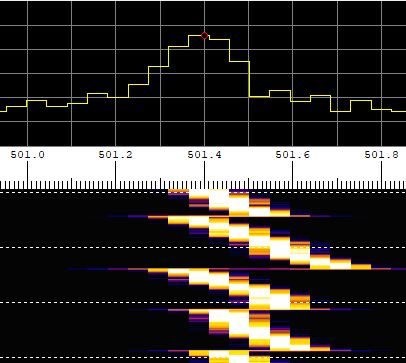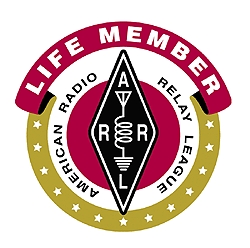I wasn’t very clear when I was posting about my pre-FMT calibration. But I did describe that the K3s was not a particularly effective rig to use for a FMT. This is because of how the digital synthesizer was implemented. Even with the optional high-stability oscillator, which my K3s has installed, the issue remains.
The behavior is very evident in the Spectrum Lab screen capture below. The K3s was fed a Rubidium based 10 MHz signal that is stable in the microhertz range. The K3s is in CW mode with a 500 Hz Pitch selected , so we would expect it to produce a 500.000 Hz tone.
On the bottom of the illustration, in the waterfall area, the horizontal dashed lines are 5 minute interval time stamps, so we are seeing the variation in tone over a 15 minutes interval. During that time, the DDS/PLL is performing a stair-step adjustment that is causing the tone to vary from about 501.2 Hz to 501.8 Hz. One might describe this as 501.5 Hz, plus or minus 0.3 Hertz.
By the way, the older K3 would do exactly the same thing. This is not a defect, as the K3s is working exactly as designed. It was done to maximize dynamic range and minimize unwanted noise from the synthesizer. The designer saw no reason to have its short term stability be better than +/- 0.3 Hertz. For ham use, that is more than acceptable. It is highly stable a longer term. It will remain at 501.5 Hz +/- 0.3 Hertz for many days.
By the way, this is also pretty much what you can expect for Doppler on a 20-meter band signal anyway. So the rig is just as stable as the ionosphere is in the short term.









